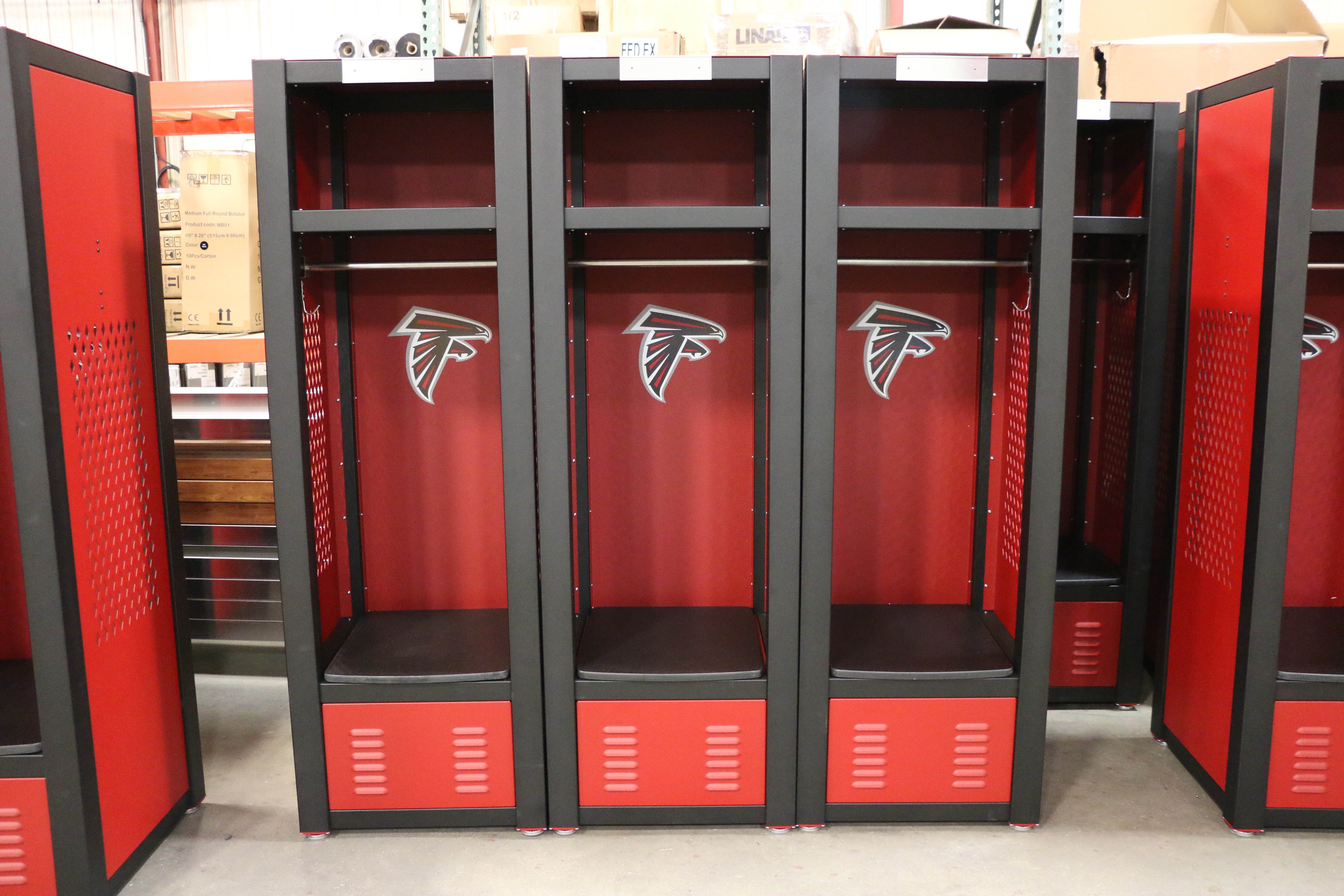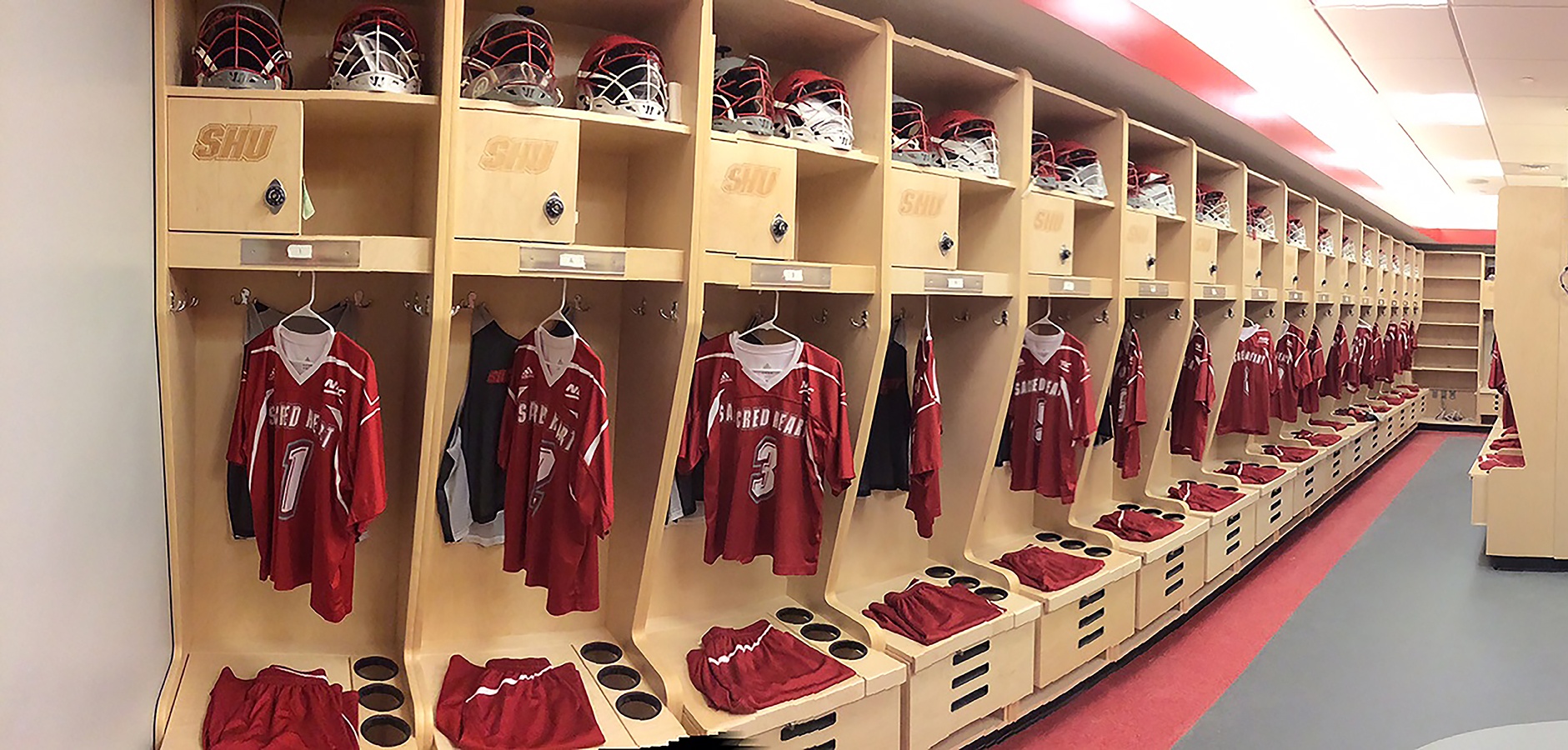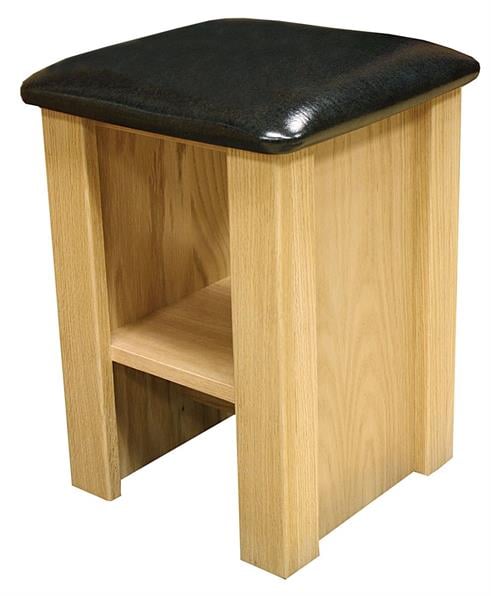Suit Yourself: Locker Rooms to Fit Your Facility
The humble locker. We use it, often abuse it, but it keeps on giving. Athletic and recreational facilities have improved their locker choices. By planning, designing and branding locker room facilities that both look great and are properly outfitted for ease of use and convenience, your locker room will succeed. Recreation Management’s Jessica Royer Ocken shares this practical guide on what you should consider when building or renovating your facility.
Creating the right locker room for your facility can make users fall in love.
It's the reward after a worthy workout, a place to get in the right frame of mind for the game, and a clean, convenient spot to get kids ready to play and then ready to leave.
It's also likely one of the most complex and expensive (per square foot) portions of the facility, whether that's a community recreation center, a college sports complex or a fitness club. So, it's safe to say the locker room is an area worthy of some thought and planning.
The following guide will help ensure you've included all the locker room essentials, as well as provide a road map for the latest trends and amenities that will take your facility beyond the basics, making it practical, attractive, durable and maybe even a little luxurious.
Start by Thinking
You may be ready to leap into action comparing tile samples and thumping on a variety of locker doors but the place to begin is actually much quieter. Think about your facility and how it's used or will be used: by whom, at what times of the day and for what activities. At the most basic level, locker rooms have to meet certain legal and comfort requirements, but knowing how to create the right space means knowing your users and their goals and intentions for the time they spend at your facility.
Visit facilities of similar size and amenities like yours to getting some feedback about what works and what doesn't work with their locker room setup. One thing that can drive the design of your locker rooms is who you're serving.
If your users are all coming at once, on their way to work or when the swim team practices, you'll need to have enough showers, mirrors, sinks, electrical outlets and electricity to accommodate a rush.
"Sometimes including the maximum possible number of lockers is the owner's biggest goal," said Christopher J. Rollhaus, AIA, LEED AP, a senior associate at Hastings & Chivetta Architects in St. Louis. But someone coming in to work out before heading to the office won't want to cram their suit jacket or nice shirt into a 12-inch-by-12-inch locker, he explained.
Careful consideration is also key if you're planning a multi-use building such as one that might be used for public games and events, as well as for private individuals to exercise. With the right planning, you could create locker rooms that can be closed and locked during public events, while still providing spectator access to the attached toilet facilities, Rollhaus noted.
Finally, determining your target market will guide you toward the appropriate finishes and amenities for your locker rooms. At a country club, the locker rooms might be used by all age groups—seniors to children—but the target market is adults who've paid for a membership, so the space should be tailored to their expectations and ability to care for it, said Greg Houston, AIA, a partner at Marmon Mok Architecture in San Antonio, Texas. In contrast, at a municipal recreation center "the target is a wider demographic, which may include unsupervised children, so the locker facility has to be designed a different way, with more durable finishes," he said.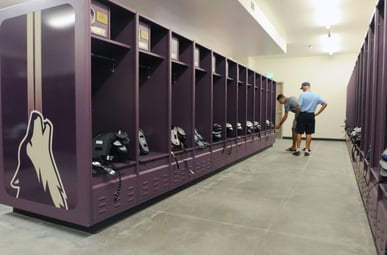
Beginning Considerations
With some ideas in mind about your facility's uses and users, the next step is to look at the practical components a locker room needs to include. This is also a good time to get the right professionals on board to assist you, if you haven't done so already.
Basically, there are two components to be considered when constructing a locker room: the "bodily functions pieces," which include toilets, sinks, lavatories and showers, and the "storage and grooming" components, such as lockers, benches, shelves and mirrors, explained Keith Hayes, AIA, LEED AP BD+C, a principal at Barker Rinker Seacat Architecture in Denver. But based on the thinking you've already done, you can probably imagine that the ways to implement these elements are nearly endless. Here are a few quick-hit tips from the pros:
Don't skimp on lockers. "Try to avoid using lockers as a place to save money unless you absolutely have to," Hayes said. But this doesn't mean you must have the wood-grain, gold-plated models either. "In a hockey or gym environment, metal lockers can be perfectly good, and maybe even desirable," he noted. Be sure you choose lockers large enough to hold the items users are likely to have with them, whether that's hockey gear or business suits. And, if you're looking to maximize the number you can provide, consider selecting several sizes- some large, some smaller.
Provide plenty of places to put things. "There's the dance we do when showering," Hayes said. "You go to your locker, you have to dry your feet, you dance around looking for a dry spot to set things. This is why hooks are good, shelves and places to set things." He also suggests plenty of benches, some fixed in place and some movable. "Often people just need a place to sit," he said.
Include some room to move. Rollhaus said his firm has a rule that when placing lockers in a U shape, the bottom of the U is always at least six lockers wide. "Anything less and people start to feel cramped," he said. "It's just for comfort and personal space." After all, there's nothing worse than an unintentional booty bump with the person at the locker behind you.
Consider lines of sight. Your locker room layout may be a study in perfection … until someone opens the door. Make sure there's a wall or some other screening agent to shield those using the locker room from the eyes outside, Houston said. But another sight consideration is the ability of your staff to see all parts of the locker room quickly. "You don't want a maze for personal safety reasons, and it needs to be easy to cycle through on a regular basis to see that all is in order and clean," Hayes said.
Lighting is not a luxury. "I don't think you can put too much attention on lighting," Springs said. Low ceilings and harsh lighting immediately create an institutional feel. "No one wants to look bad naked, and a change to warmer light can dramatically change their perception of the room," he added. Houston suggests upgrading light fixtures or using indirect and natural light in the locker room, and he added that the level of light is also important. "You want enough to see while you're changing, but not so much that you feel on display," he said. Except where grooming is concerned, of course. At the vanity, patrons need more wattage, but warm, face-friendly tones will again be appreciated.
The nose knows. Proper ventilation is both a health and a comfort consideration, and also affects the longevity of your locker room's equipment and features, Houston noted. This is not just air volume, but air temperature, humidity and the number of air changes per hour, all of which should be carefully calibrated based on the size and layout of your locker room, as well as the users it serves (wet or dry, showering or not showering, laden with stinky equipment or dressed and ready to go). "Ventilation and air conditioning are the main elements of [indoor air quality], but there are some other things you can do," Houston said, "for example, scenting the air stream and incorporating plants in the locker room, plus mechanical air purification." Springs added that keeping "negative pressure" in the locker room will help contain any odors there, and bringing more natural, outside air through the space can also be a big boon for air quality.
Extra Embellishments
You've met code requirements, listened to the needs and requests of your potential users, and considered the special demands of the activities your facility will offer. What's left now is all bonus: little ways you can add oomph to your locker rooms and make them something special.
If your locker room will be home to an athletic team, here's your chance to help them succeed, Houston said. Boost team spirit by integrating their colors, logo and mascot into the decor that surrounds them as they prep for practice and to take on opponents.
The pros also report that a notable trend in locker rooms these days is that they're just nicer. "We've invited cameras into pro sports locker rooms, so people see that clubhouse environment," Hayes said. If it's good enough for those guys, why not all of us?
Hotels and restaurants are also an inspiration, he noted. From them have come trends like hexagon tiles and wooden doors, as well as in-counter tissue dispensers and complimentary toiletries, Houston added. Obviously these sorts of high-end finishes and freebies won't be the best for a general-purpose public locker room, but perhaps some clients would pay a bit extra for these amenities?
You might also consider services as a way to bump up the luxury. Include a sauna or steam room among the lockers for a little extra relaxation, if space permits. Perhaps hot towels or manicures or massages (for a fee, of course) would make your locker room stand out. Why not offer snack service or a juice bar in a lounge area so users can socialize a bit? Country clubs and private facilities have been moving this direction for some time now, reported Rollhaus and Houston. And the private sector is "a vanguard, so [these things are] probably coming soon to public projects," Springs said.
The Payoff
When you have great locker rooms, those using your facility will be impressed. They might even tell their friends. And if you've gathered information and planned in advance, your final product will likely save you time and money on maintenance, as well as perhaps even generating a little revenue—either via services you offer or indirectly by keeping business coming through your doors.
But whatever you do, don't get stars in your eyes and forget the basics. No matter how fabulous your finishes are, if they're scratched, perpetually soaking wet, or slightly stinky, the glamour will be lost. "It all goes back to cleanliness," Hayes said. "That can make or break an experience."


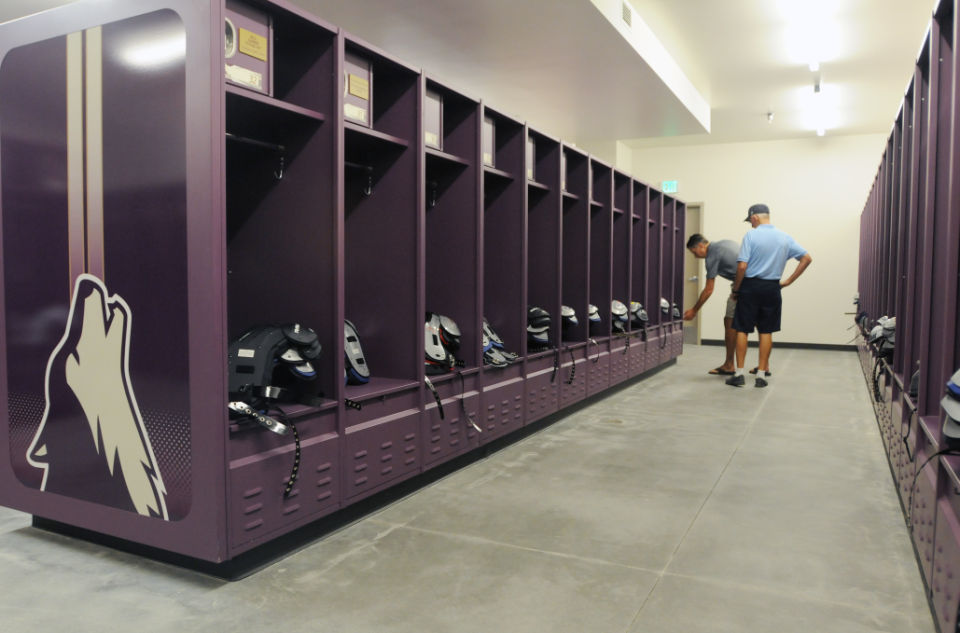



.webp)
